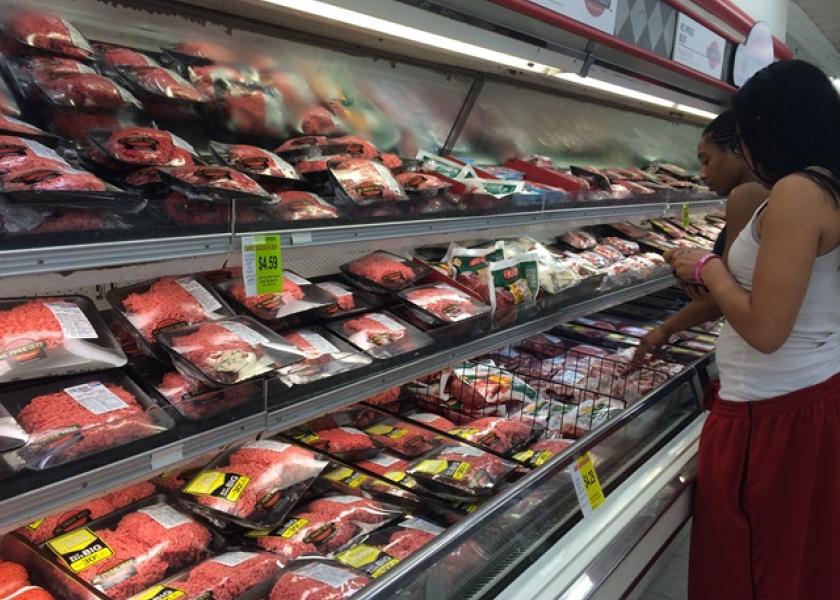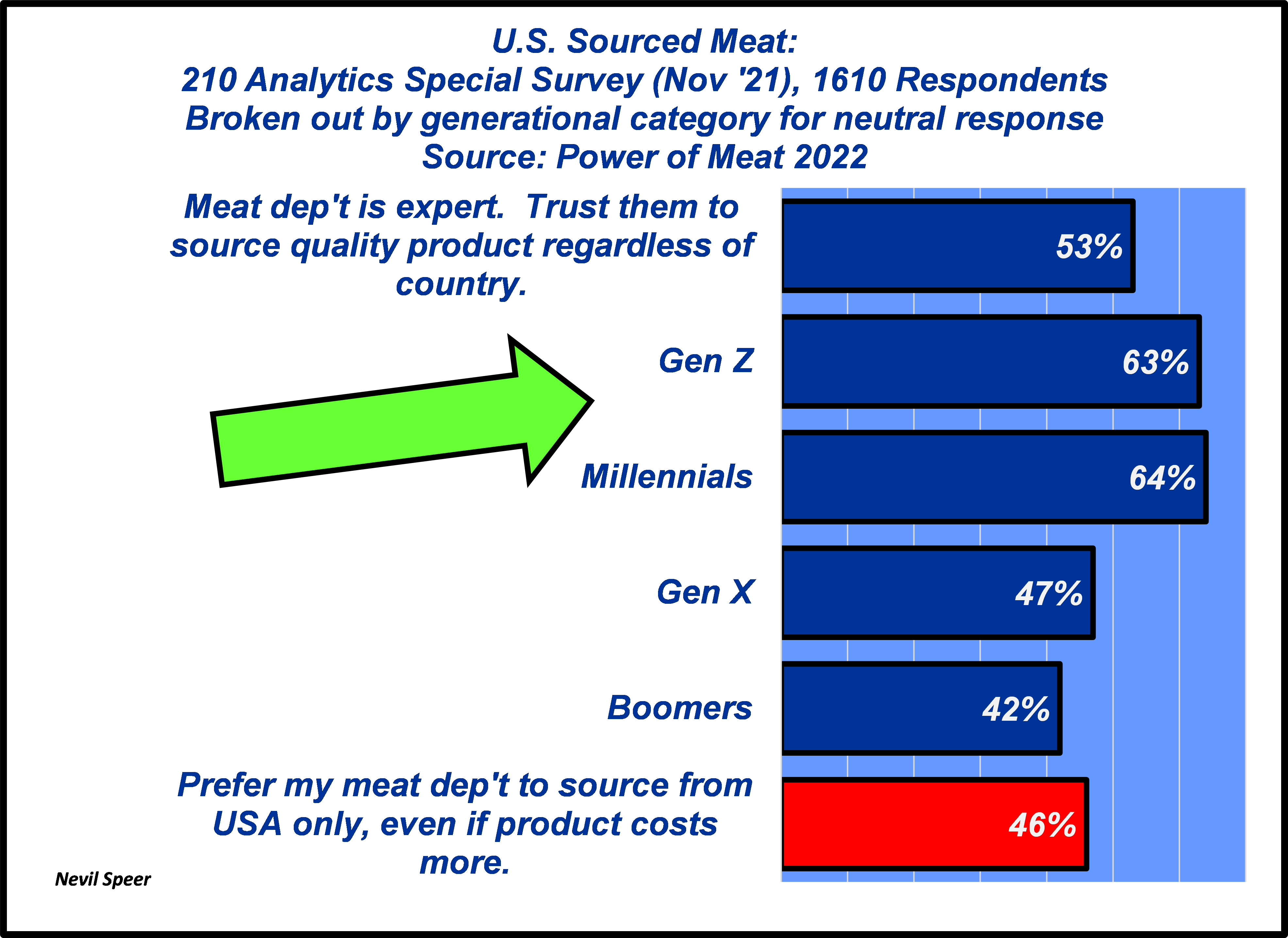Speer: COOL = Blunt Instrument

One of the emails I received following my first Drover’s column on COOL stands out. It succinctly summarized the broader sentiment among COOL supporters: “I can not understand why you would say that beef consumers do not care where there[sic] meat comes from and therefore cool should not be established?” The response highlights the need for some broader context.
First, let’s focus on “beef consumers”. Food purchases – especially meat – involve decision-making around all sorts of determinants: quality, color, health/wellness, food safety, convenience, brand, price, etc… Then there’s consideration of the occasion for which the item is being purchased (is it Friday-evening dinner or Wednesday-night spaghetti?). And last, all that occurs within a framework of the overall shopping experience (when and where). As such, the term “beef consumers” avoids all the intricacies in the marketplace when it comes to segmentation.
Now let’s go a step further and explore the issue of “where food comes from.” Undoubtedly, consumers increasingly want more transparency. But reference to “where food comes from” invokes very specific connotations – beyond just country-of-origin. The phrase references a multitude of credence attributes consumers may consider important when purchasing food products. And there’s a significant portion of the marketplace where those attributes establish differentiation.
The first graph highlights those distinctions as detailed in the Power of Meat 2022 study. In line with my reader’s email, the report indeed notes that, “Raised in the U.S. is the most popular label claim selected, at 48%.” However, there’s also a slew of other considerations that drive purchasing behavior: “Already representing 10% of sales, there is interest by four in 10 meat shoppers to add more meat raised without antibiotics. A higher 44% of consumers would like to see more meat raised without added hormones. Claims surrounding all natural and grass-fed remain popular as well.”

Finally, let’s circle back to COOL. Power of Meat also references a November ’21 survey by 210 Analytics that delved into the relationship between country-of-origin labeling and price differentiation – especially important amidst the recent surge of inflation (see second graph).
Among the 1,610 respondents, only 46% (in line with the 48% referenced above) stated, “I prefer my meat department source from the USA only, even if the product costs more.” However, that also means more than half seemingly are indifferent to a country label. And then comes the most important question among those responding positively: how much more would you pay? That question remains unanswered.

The November survey also provides some critical direction for the future. Overall, 53% of respondents state they trust their meat department to, “…source quality product at the best value regardless of country.” Most important is the deeper dive: nearly two-thirds of Gen Z and Millennials agreed with the statement. That is, the largest segment of consumers – and the ones who’ll be doing the majority of the spending in the next 20-to-30 years don’t really care.
Last year’s Power of Meat study describes Millennials position in the market place this way: “…future success requires a careful balancing of current spending patterns versus the very different wants and needs of the Millennial generation.” To that end, the second Drover’s column pointed out the costs of COOL are front-end loaded. Producers end up paying for COOL now, but given the generational discrepancy, that investment is especially unlikely to pay off in the future.
The marketplace is complicated. Frank Beurskens (Co-Founder of the former Shop-To-Cook concept) describes the enduring complexities best, noting that food purchases often represent a “portfolio of priorities.” Therein lies the challenge. The marketplace simultaneously requires both flexibility AND precision. Only the private sector can effectively facilitate that need. COOL goes in the opposite direction; it’s a blunt instrument that fails to create any lasting value.
Nevil Speer is an independent consultant based in Bowling Green, KY. The views and opinions expressed herein do not reflect, nor are associated with any manner, any client or business relationship. He can be reached at nevil.speer@turrkeytrack.biz







